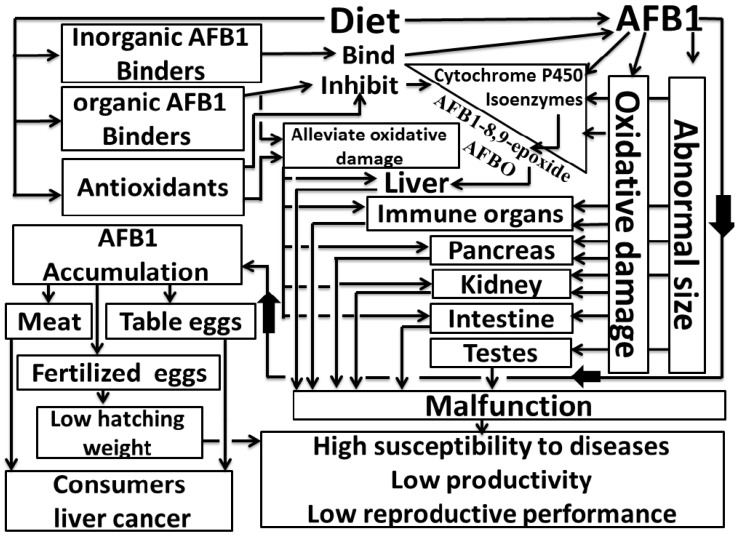Figure 1.
Impacts of aflatoxin B1 (AFB1) on poultry organs functions, productivity, and consumer health, and nutritional factors that might mitigate these impacts. The presence of AFB1 in the diet of poultry leads to body organs with abnormal sizes, stimulates the production of cytochrome P450 isoenzymes to convert AFB1 into AFB1-8,9-expoxide (AFBO; as the more toxic form of AFB1), oxidative damage, and organ malfunctions, which led to low productivity, decreased reproductive performance, high susceptibility to diseases, and the accumulation of AFB1 in eggs and meat, which can be harmful to the health of consumers. Adding inorganic AFB1 binders can bind AFB1 and reducing the accumulation of AFB1 in eggs and meat according to their efficiency. Organic AFB1 binders, such as probiotics, can bind or absorb AFB1 to decrease the conversion of AFB1 into AFBO by suppressing cytochrome P450 isoenzymes, as well as alleviating oxidative damage to organs and reducing the accumulation of AFB1 in eggs and meat. The addition of antioxidants, such as selenium and curcumin, can decrease the conversion of AFB1 into AFBO by suppressing cytochrome P450 isoenzymes and alleviate oxidative damage to organs.

